In visiting Shanghai, you glimpse the future - in many different ways. You can stand on the Bund,
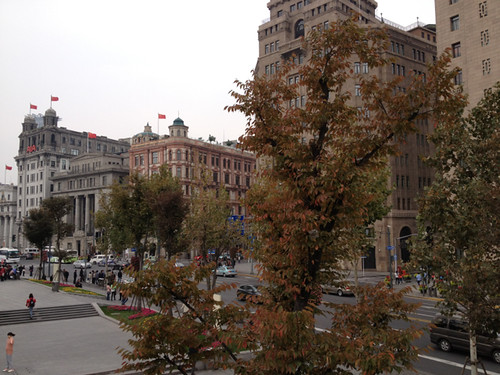
- the site of development by European colonial powers around the turn of the nineteenth and twentieth centuries - and look across the Whampoa River to Pudong, the business and finance centre of Shanghai. This is what you see...
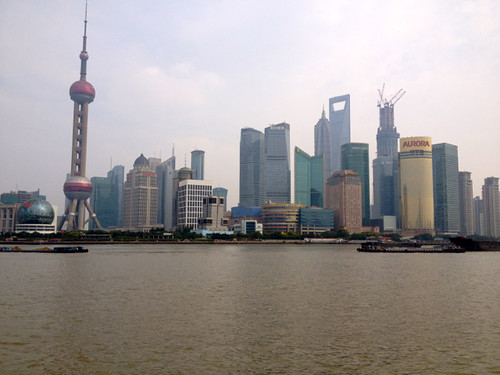
Pudong's futuristic skyline has become the symbol of modernity for popular culture. All of this development has happened in the last twenty years. Some of the architecture is inspirational; some more mundane. What impresses me is the pace of the development and the aspiration that makes it possible. We went to the viewing area at the top of the elegant 88 storey Jin Mao tower (whose lift travels at a very smooth 9.1 metres per second - the Chinese love quantitative measures of their achievements).

You feel as if the whole skyscape will have changed if you were to return in five years. The view of new Shanghai is impressive, but the inevitable pollution generated by such rapid development in one of the world's largest cities is also very evident. This is an immediate problem for modern China.

Managing people's movements around such a large city is clearly challenging. When I first visited China in 1983 the roads were crowded with bicycles. By my next visit in 2001 every road seemed to be in a state of 'improvement' to accommodate the rapidly increasing number of cars, and the second of the subway lines in the still-new metro development had just opened. Eleven years later there's a complex and very efficient network of twelve subway lines (with more under construction) enabling people to travel easily by train under Shanghai. But the road problem remains. Outside my hotel window in Shanghai was an elevated six-lane highway with another six-lane road beneath. At all hours of the day and night it was thronged with traffic.
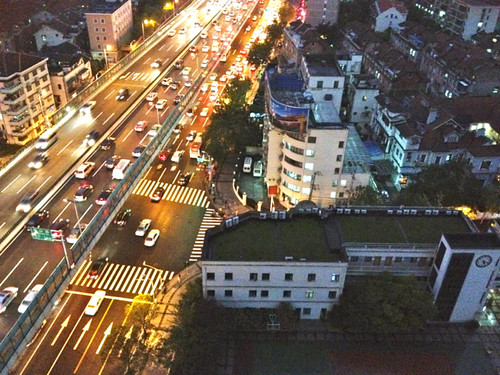
Probably the most futuristic experience of our visit was a trip on the Maglev train that runs between Pudong Airport and a suburban metro station. The distance travelled is only 31 kilometres and it seems as if this development was a kind of vanity project for the 2011 Expo in Shanghai. But it does show what's possible. Given the rate of development in China, who knows where it will lead?

The train operates by some mysterious (to me) use of magnetism which minimises friction. Given the limited distance of the trip it reaches its maximum speed of 423km per hour for only a few seconds. Even so, the 31km trip takes only 7 minutes. In Australia, where our once-extensive railway system diminishes and deteriorates day by day one can only envy the possibilities of such developments.
Shanghai is such an exciting city. A glimpse of the future.
And finally... I said in a previous post that I would have difficulty choosing five favourite things in China, but I do have one very favourite thing. It's the river Li in the south of China. It's neither of the past nor the future. It's timeless.
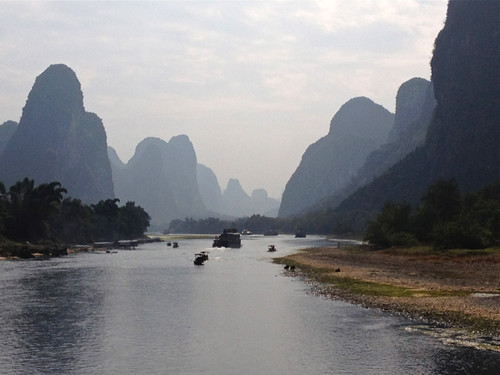
We visited Guilin on the Li, and then took a boat for about five hours along the Li River to the town of Yangshuo. Every minute of the boat trip was magical. The Li River is quite shallow and winds its way between karst (limestone) outcrops. Every view - particularly on a misty morning such as the one we experienced - is like a traditional Chinese watercolour or scroll painting. There are very occasional small villages, standings of bamboo along the banks of the river, and fishermen on simple bamboo rafts using cormorants to catch fish. I could show many photos, but all are variations on the same theme - the lazy river, sheer rocky outcrops, simple ferry boats, and graceful vegetation.
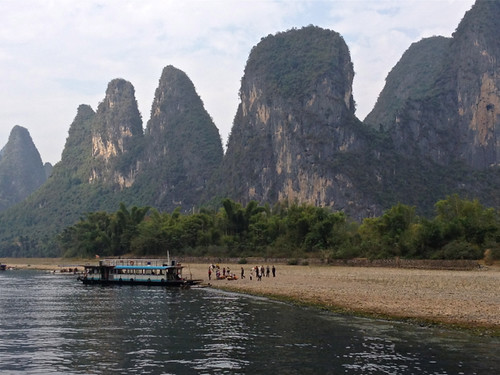
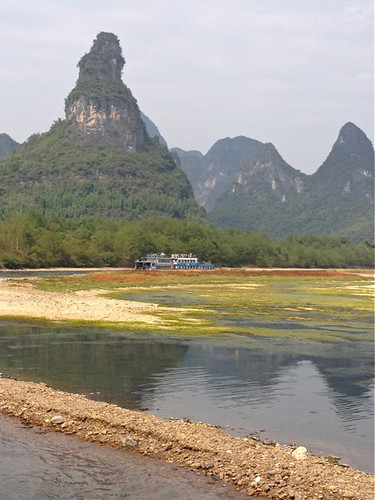
I wouldn't have thought anything could rival the delight of our trip on the Li River but in the evening in Yangshuo we went to a performance of 'Impresssions' - an astonishing presentation of the traditions and cultural diversity of this southern region of China. The stage was the Li River itself and the backdrop was twelve of the karst mountains, most beautifully and subtly floodlit. There were more than 600 performers, all drawn from the local area. The beauty, scale, grandeur and sheer bravura of the production were partly explained when I discovered that the creator of this amazing performance was Zhang Yimou, well known epic film director (Red Sorghum, Hero)who later went on to devise and direct the opening ceremony of the Beijing Olympic Games.
So, Guilin, the Li River, and the performance at Yangshuo - my very favourite experience of my China trip.
4 comments:
I think the Li River (in fact all the rivers) and associated landscape are my favourite bits too. Amazing and so beautiful.
Wow! thanks for sharing your impressions of China. Sometimes, for those who've never been there, it's hard to think beyond the Forbidden City, the Great Wall, the Entombed Warriors and the Olympic Swimming Centre!
I have enjoyed my trip through china via your posts. Merry Christmas to you and yours.
Ive always found Shangai so intriguing, how that whole post-colonial meets communist china thing plays out. i would really like to go there. and then the contrast with the beautiful Li River and that perfect landscape, you've captured these extremes so well.
Post a Comment